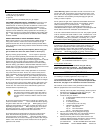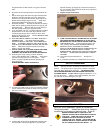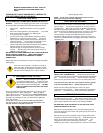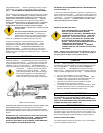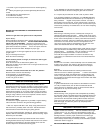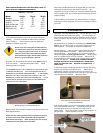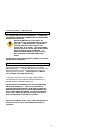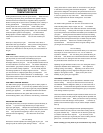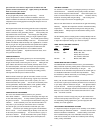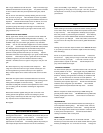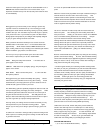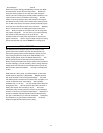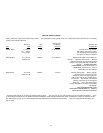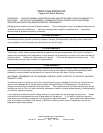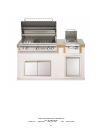Special offers from our partners!

Find Replacement BBQ Parts for 20,308 Models. Repair your BBQ today.

20
steaks two inches apart on the grill. Sear the steaks QUICKLY on HI or
MEDIUM heat and then finish them on LO for best results. If you
experience excessive flare-up from the fats and juices reduce the heat
to LO immediately.
We suggest that you tend to what you are cooking to prevent any
surprises in terms of excessive flare-up or over-cooking your meal.
Rearrange the steaks several times during cooking to prevent possible
excessive flare-ups. Turn the steaks only once with tongs or a spatula,
never pierce with a fork or you will lose the juices. The Performance
Grilling System incorporated in your PGS grill was especially designed
to give you great cooking results for beef meals.
When you believe the beef is finished you can use the touch test
described earlier in this section. Four 1 1/2 inch steaks should take
approximately 22-28 minutes cooked on MEDIUM and then LO.
Again, cooking results will vary according to the individual grill, location,
weather conditions, gas pressure, and other factors.
The more you use your grill the better you'll control the results.
Here's what to expect when you use the "TOUCH TEST".
RARE
: Meat gives easily when touched. It is seared, but no
juices appear on the surface.
MEDIUM:
Meat feels firmer yet slightly spongy, and juices begin to
appear on the surface.
WELL DONE
: Meat is covered with juices . It is firm and does
NOT yield to pressure.
We suggest serving your steaks immediately after grilling. Steaks
will lose their juices if allowed to sit too long after cooking. A little
seasoned butter (see recipe) placed on top of the steaks as soon as
cooked will add a gourmet touch to your meal.
Your PGS cooking grids are specifically designed to retain the heat and
cook your steaks quickly, thoroughly, and evenly throughout. Unlike
conventional grids that transfer their heat to the cut of meat put on
the grills and then take time to recover. Your PGS grills have the
ability to retain and transfer large amounts of heat and do not require
any time to get back up to proper cooking temperatures.
This may cause your cooking times to be shorter than what you may
have experienced on your last outdoor cooking product. Again,
keep an eye on what you are doing to prevent ruining a good cut of
meat.
To achieve the "cross-char" markings used by restaurant chefs give the
steak a quarter turn halfway through the cooking on both sides to sear
in grill marks that cross.
ROASTS ON THE GRILL
To ensure the best possible results when cooking roasts we suggest
the use of an optional PGS rotisserie and meat thermometer with
probe.
Mount the roast as evenly as possible on the spit rod before cooking to
minimize strain on the motor and to insure even turning. Limit
rotisserie roasts to twelve pounds to avoid straining the motor and
possible contact with the briquettes. Be sure that all rotisserie-cooked
meats are secured to the spit rod and the thumbscrews on the meat
forks are tightened securely before cooking.
Use oil or a marinade on roasts to help seal the meat surfaces and
hold in the juices. Use a foil drip pan when cooking meats with a
heavy fat content. Initially, you can sear the roast on HI or MEDIUM
heat, but extended cooking should be at the LO setting. Keep an
eye on the meat thermometer to ensure best cooking results.
Cooking with the lid closed will always accelerate the cooking process.
Cooking with the lid open or closed is one of personal preference.
Cooking with the lid open will minimize flare-up of fatty cuts of meat.
After using your grill a few times, you'll choose the method that you
will be most comfortable with... grilling is an individual cooking
experience!
Brush on tomato based sauces and glazes only during the final cooking
period to avoid surface charring. Oil, wine, and broth based cooking
sauces and marinades may be applied throughout the cooking process.
Allow your roast to "set-up" for at least 10 minutes after rotissing to
keep juices from being lost during carving.
* The above guide will aid you in achieving excellent cooking results.
The more you use your grill the better you and the results will become.
Keep in mind that several factors such as outdoor temperature
conditions, wind, humidity, altitude, and size, quality, and thickness of
the meat being grilled can affect your grill's cooking characteristics.
Your PGS outdoor gas grill is a fun and exciting product that
welcomes your involvement and creativity. Only your imagination will
limit what your grill can cook!
POULTRY ON THE GRILL
Poultry and your PGS gas grill are a natural and flavorful combination.
Virtually all poultry is tender and requires a minimum of cooking.
Get creative with different cooking methods using your favorite sauces
and marinades. Always trim away excess fat and keep an eye on
the meal you are grilling to minimize unwanted flare-up. As a
general rule, brush all poultry with cooking oil to seal in the flavor and
juices and cook on the LO heat setting AFTER pre-heating.
Unlike other cuts of meat, chicken and poultry can be barbecued
ahead of time and kept warm or re-heated prior to a later serving.
This flexibility makes poultry an excellent choice for large gatherings.
Poultry is popular any way you grill it. It is also economical, has
tremendous versatility, and nutritious. The following recipes should
be used as a basic guide. As soon as you get comfortable and
familiar with the cooking ability of your PGS grill get creative.
CHICKEN ON THE ROTIS
1 (2 1/2 TO 3 1/2 Pound Whole Chicken) Paprika



